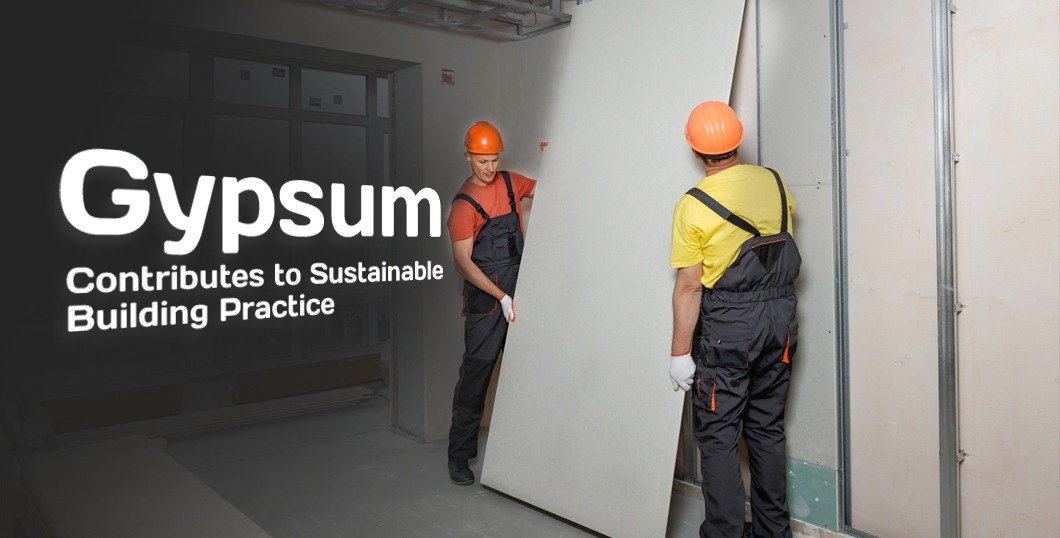
Sustainability in construction has become a top priority as the world aims to combat environmental challenges and reduce its carbon footprint. Builders and architects are constantly seeking materials that balance performance, affordability, and environmental responsibility. Gypsum is a naturally occurring mineral widely used in construction and has emerged as a key player in sustainable building practices.
But what makes gypsum such a vital element in sustainable construction?
The unique properties and benefits of gypsum make it an indispensable material in green building initiatives.
Energy Efficiency in Production
The production of gypsum boards and plaster consumes significantly less energy compared to traditional construction materials like concrete or bricks. This reduced energy consumption minimizes the carbon footprint associated with its manufacturing process, making gypsum an environmentally conscious choice. Additionally, the production process generates less greenhouse gas compared to alternatives like cement, making gypsum an eco-friendly choice for sustainable construction.
Thermal and Acoustic Insulation
Gypsum products in Qatar offer excellent thermal and sound insulation properties. This reduces the need for additional energy-intensive insulation materials and helps lower energy consumption in buildings by maintaining comfortable indoor temperatures naturally. This makes gypsum an ideal choice for residential, commercial, and institutional spaces where privacy and noise control are priorities.
Recyclability
One of the gypsum’s standout features is its recyclability. Used gypsum products can be easily processed and reintroduced into production, reducing waste and conserving natural resources. Recycling gypsum also minimizes the need for landfill space, addressing waste management issues effectively. Many industries and manufacturers have established closed-loop recycling systems where gypsum waste is efficiently collected and transformed back into usable materials.
Non-toxic and Healthy Living Environments
Gypsum is a naturally occurring mineral that is non-toxic and contributes to healthier indoor air quality. Its use in construction materials, such as drywall, can help create safe and sustainable living environments without releasing harmful emissions. One of gypsum’s standout features is its ability to regulate indoor humidity. It naturally absorbs excess moisture and releases it when the air is dry, preventing the growth of mold and mildew. This property helps reduce allergies and respiratory problems, creating a more comfortable and healthy living environment.
Gypsum Plaster and LEED Certification
Gypsum plaster is a versatile and sustainable building material that plays a significant role in achieving LEED (Leadership in Energy and Environmental Design) certification. LEED is a globally recognized green building certification system that rewards projects for environmentally responsible construction practices.
Using Gypsum plaster in construction can contribute to several LEED credits, making it an invaluable material for green building initiatives. Its non-toxic and low-VOC emissions create a healthier environment, meeting the standards for green and sustainable building materials.
Incorporating gypsum plaster into building projects enhances sustainability and strengthens a project’s eligibility for LEED certification. Its eco-friendly characteristics make it an ideal choice for builders and architects aiming to create environmentally responsible and energy-efficient structures. By choosing gypsum plaster, developers can seamlessly align with LEED requirements while building for a greener future.
Gypcore’s position as the largest gypsum board manufacturer in Oman reflects its commitment to sustainability, innovation, and high-quality craftsmanship. Our focus on producing green gypsum-based solutions makes it an invaluable partner for any construction project that prioritizes environmental responsibility. As Gypcore continues to lead the charge in sustainable building practices, it is setting new industry standards for how construction materials should be produced and utilized in the pursuit of a greener, more efficient future.




